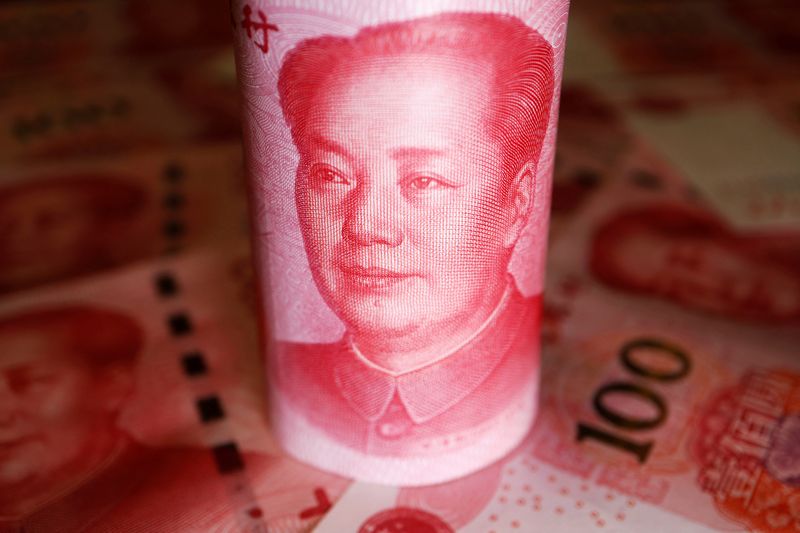BEIJING (Reuters) - China's new yuan loans are expected to rebound in March from a sharp drop in February, a Reuters poll showed, as the central bank seeks to bolster economic growth amid expectations for more stimulus in the coming months.
Chinese banks are estimated to have issued 3.56 trillion yuan ($492.11 billion) in net new yuan loans last month, more than double the 1.45 trillion yuan in February, according to the median estimate in the survey of 22 economists.
The expected new loans would be lower than 3.89 trillion yuan issued in the same month a year earlier.
After record growth in credit in January, new lending declined in February. If the March reading matches forecasts, total lending in the first quarter would reach 9.93 trillion yuan, versus a record of 10.6 trillion yuan in the first quarter of last year.
"Banks likely continued to offer credit support for the real economy, recovering a bit after the notable weakness in February," analysts at UBS said in a note. "Boost from loans to NBFIs (non-bank financial institutions) may have narrowed from February."
In February, new lending to non-bank financial institutions, including brokerages and funds, surged to 404.5 billion yuan, from 24.9 billion yuan in January, central bank data showed, fanning speculation that such loans could have been used to support the ailing stock market.
Most analysts believe the central bank will stick with traditional tools rather than resorting to massive liquidity injections through "quantitative easing" (QE), as some major economies such as Japan and the United States have done.
China has set an economic growth target for 2024 of around 5%, which many analysts say will be a challenge to achieve without much more stimulus. Consumer and corporate confidence has been persistently weak since a post-pandemic bounce quickly fizzled out early in 2023.
The Deputy Governor of China's central bank Xuan Changneng said in late March that there was still room for cutting banks' reserve requirement ratio (RRR) following a 50-basis point cut earlier this year, which was the biggest in two years.
China has pledged that the growth of total social financing (TSF), a broad measure of credit and liquidity, and money supply will match expected goals on economic growth and inflation this year.
Outstanding yuan loans in March were expected to grow by 9.9% from a year earlier, slowing from 10.1% in February, the poll showed. Broad M2 money supply growth in March was seen at 8.7%, the same as in February.
China has set the 2024 quota for local government special bond issuance at 3.9 trillion yuan, up from 3.8 trillion yuan last year. China also plans to issue 1 trillion yuan in special ultra-long term treasury bonds to support some key sectors.
Any acceleration in government bond issuance could help boost TSF. Outstanding TSF was 9.0% higher at the end of February than a year earlier, growing slower than the 9.5% annual rate seen at the end of January.

In March, TSF is expected to soar to 4.70 trillion yuan from 1.56 trillion yuan in February.
($1 = 7.2342 Chinese yuan renminbi)